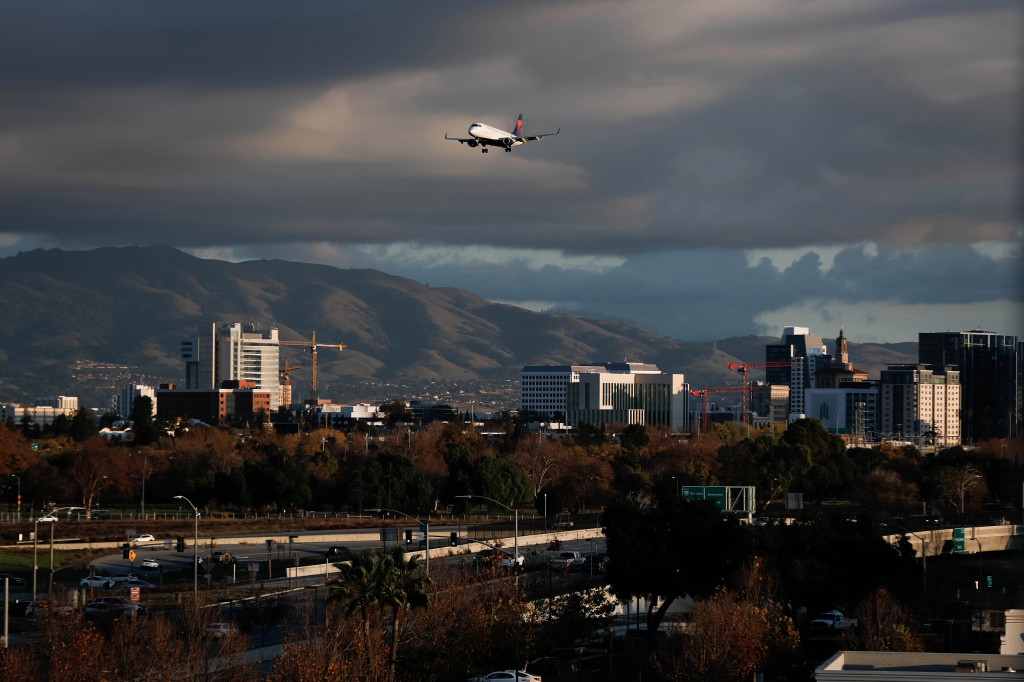In the wake of a pandemic sweeping through many of the country’s most densely packed areas, analysts expect an exodus from cities in favor of car-friendly suburban areas.
San Jose is among the cities best-positioned to reap the benefits of a post-coronavirus world, according to a new study from the data analytics firm Moody’s. Researchers looked at the top 100 metro areas in the U.S., favoring those with more educated — and spread-out — populations, to predict which cities would fare best and worst in the aftermath of the COVID-19 crisis.
San Jose was joined by a selection of college towns and rising western cities on the list of the 10 best-positioned. Among the 10 worst: Los Angeles, along with most of the northeast corridor, while San Francisco, the West Coast’s most densely-packed city, sat just outside the top 10, thanks to its highly educated workforce.
“Silicon Valley is nobody’s idea of an up-and-coming area,” Adam Kamins, the author of the report, told Forbes. “But there is a notable contrast between the San Jose metro area, with its sprawling tech campuses, and tightly packed San Francisco.”
Only Durham, N.C., claims a more-educated workforce than San Jose, according to the study. Just over 40% of jobs in each metro area require a college degree, researchers found. San Francisco ranked fifth, behind Washington, D.C., and Boston, with just over 35% of its jobs requiring a college degree.
But San Francisco is more than three times as dense as its neighbor in the South Bay. More than 17,000 people live in each square mile of the city, on average, compared to about 5,300 in San Jose. Los Angeles is slightly denser than San Jose but has a less-educated workforce than its Bay Area counterparts.
The researchers modeled city and county population density against the percentage of jobs in a city that require at least a bachelor’s degree and a county’s educational attainment. They hypothesize that areas with established professional job sectors could could capitalize on a generation of workers scared away from the densely populated areas that have been hit hardest by the novel coronavirus.
“The most dynamic recoveries may well bypass traditional powerhouses and take place instead in areas that either were or were poised to lead the way in 2020 before everything changed,” Kamins writes in the report, according to Forbes.
That includes Boise, Idaho; Denver; Durham, N.C.; Madison, Wis.; Provo, Utah; Raleigh, N.C.; Salt Lake City; San Jose; Tucson, Ariz.; and Washington, D.C.
There are a number of “traditional powerhouses” among the bottom 10: New York City, Los Angeles, Philadelphia, Miami, Honolulu, Detroit, Tampa and New Haven, Conn., all made the list.
But mid-sized, lower-income cities of Stockton and McAllen, Texas, rounded out the bottom 10.
While they aren’t as dense as the other major metros, they aren’t the economic engines of any of the cities in the top 10. But they are also more dense than many of their economically disadvantaged counterparts.
“Inland California is much worse off economically than coastal California,” Kamins told Forbes. “Plus, a place like Stockton is a little bit more compressed. There’s not as much space there. So there’s a bit more risk.”
While those powerhouses were the first to recover from the 2008 financial crisis, they’re likely to suffer the largest burden from the COVID-19 pandemic, the analysts say.
They expect people to move away from cities like San Francisco, Los Angeles and New York in the near-term but that they are “resilient enough to eventually find (their) footing again.”



















